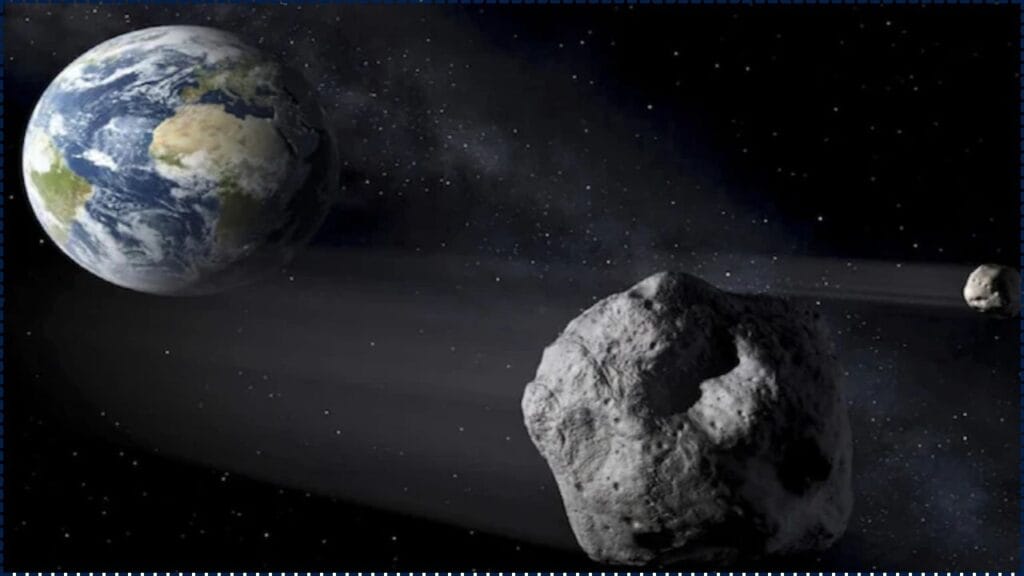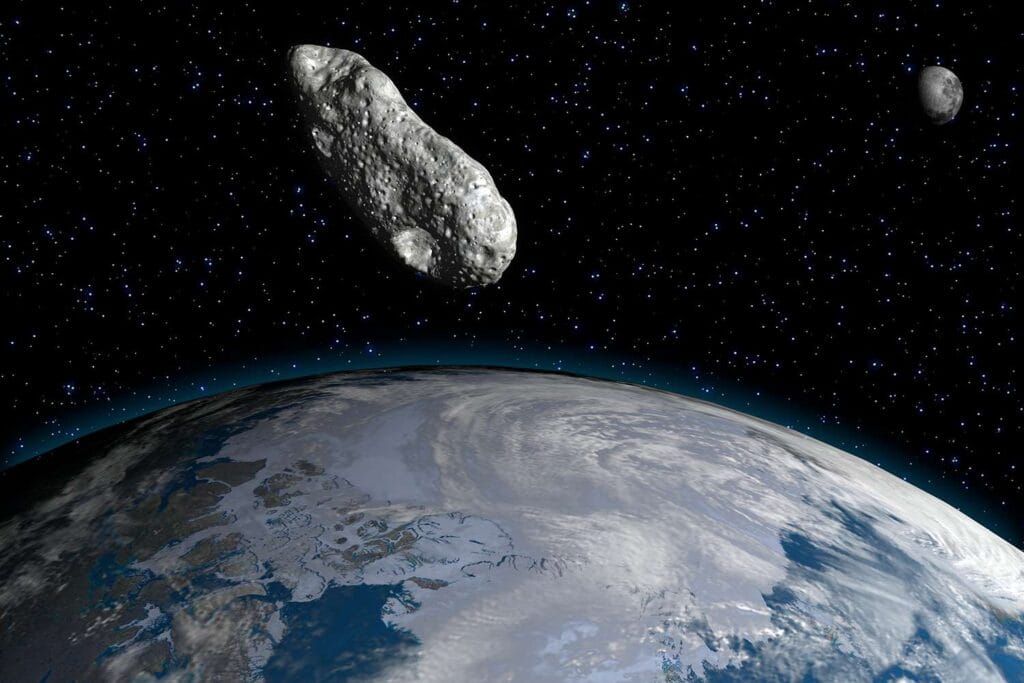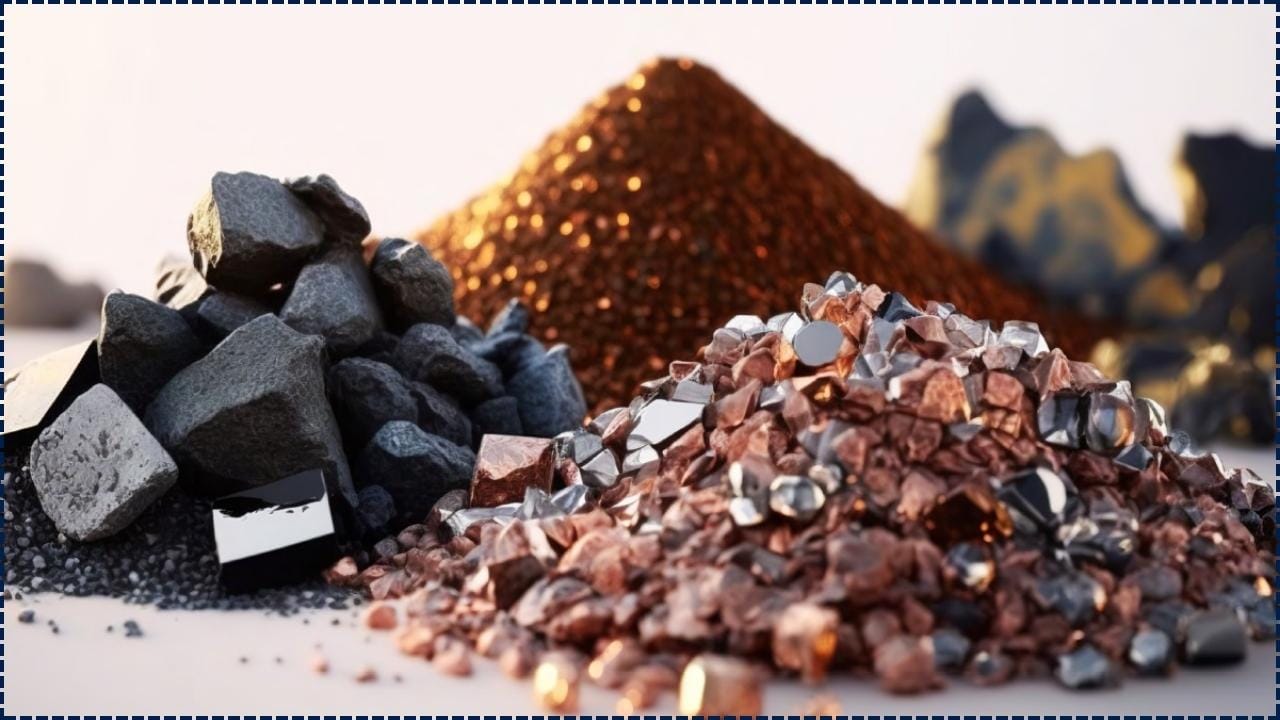In a dramatic turn of events, asteroid 2024 YR4, first discovered in December 2024, is now being closely monitored due to its potential collision with the Moon in 2032. Although this asteroid is not expected to strike Earth directly, the consequences of its impact with the Moon could lead to the ejection of debris into space, possibly jeopardizing satellites and other objects in Earth’s orbit. In this article, we will explore the likelihood of this asteroid impact, its possible consequences for Earth, and the ongoing global efforts to track and prepare for such space hazards.

Asteroid Could Hit the Moon in 2032
| Aspect | Details |
|---|---|
| Discovery Date | December 27, 2024 |
| Asteroid Size | About 60 meters (174–220 feet) in diameter |
| Impact Date | December 22, 2032 |
| Lunar Impact Probability | 4.3% chance (as of June 2025) |
| Crater Size | 1 kilometer (0.6 miles) in diameter |
| Energy Released | Equivalent to 6.5 megatons of TNT, about 340 times more powerful than the Hiroshima atomic bomb |
| Debris Ejection | 100 million kilograms (220 million pounds) of lunar material could be ejected into space |
| Earth Risk | Potential satellite and spacecraft hazard from debris; no direct risk to Earth’s surface (thesun.co.uk) |
While asteroid 2024 YR4 is not a direct threat to Earth, its potential collision with the Moon in 2032 could have far-reaching effects, particularly in terms of space debris and satellite safety. Continued monitoring and planetary defense efforts are essential in mitigating any risks posed by asteroids and ensuring the safety of space infrastructure. As the world prepares for future lunar exploration, understanding the potential hazards from space is more important than ever.

The History of Asteroid Impacts on the Moon
The Moon has long been a target for asteroidal impacts, given its lack of atmosphere, which allows objects from space to collide with its surface without burning up. Over billions of years, the Moon’s surface has been bombarded by numerous asteroids, which have left craters that offer valuable insight into the history of our solar system.
One of the most prominent examples of an asteroidal impact on the Moon is the Tycho Crater, a well-preserved impact site that formed around 108 million years ago. The Moon’s craters, some of which are over a kilometer wide, show just how powerful these impacts can be. With asteroid 2024 YR4, we could see another chapter in the Moon’s history of impact events.
Why Asteroid 2024 YR4 Has Scientists Concerned
Even though asteroid 2024 YR4 is not likely to collide directly with Earth, its potential collision with the Moon has raised alarm for several reasons. Firstly, the energy released by the asteroid’s impact would be massive, potentially creating a 1-kilometer-wide crater and ejecting significant amounts of lunar debris into space. This debris, traveling at high speeds, could become a hazard for satellites and spacecraft in Earth’s orbit, disrupting communications, weather forecasting, and navigation systems.
Additionally, the 4.3% chance of impact, though small, still warrants monitoring. The slight chance of such a significant event highlights how even small asteroids can have disproportionate consequences when interacting with celestial bodies like the Moon.
The Moon Impact: What Would Happen?
Should asteroid 2024 YR4 collide with the Moon, the immediate effects would be striking. The energy released by the asteroid’s impact would be equivalent to 6.5 megatons of TNT, enough to create a 1-kilometer crater on the Moon’s surface. The collision would eject millions of kilograms of lunar material into space. Some of this debris could travel toward Earth and create a meteor shower, which would be a fascinating event to witness, though it’s unlikely to pose a threat to Earth’s surface.
Debris Ejection and Meteor Shower
When the asteroid strikes, it would hurl lunar material into space at extremely high speeds. Some of the ejected debris could enter Earth’s atmosphere and burn up, while larger objects might survive the journey. These fragments could result in a meteor shower, visible from Earth. Though the risk of large fragments surviving is low, this could still be a spectacular sight for skywatchers.
The Effect of a Moon Impact on Future Lunar Exploration
In addition to the space debris that could affect satellites, asteroid 2024 YR4’s collision with the Moon could also impact future lunar exploration missions. For instance, NASA’s Artemis program, which aims to return humans to the Moon, could be impacted by the disruption caused by the debris. If a future lunar base or robotic exploration mission is in the path of the debris, it could lead to delays or even destruction of critical infrastructure.
As we venture further into space exploration, understanding the risks posed by space objects like 2024 YR4 will be essential to ensuring the safety of lunar missions and the development of sustainable bases on the Moon.
Potential Strategies for Asteroid Deflection
In the event that a more significant threat arises, planetary defense strategies are being explored. Techniques to deflect or redirect asteroids include:
- Kinetic Impactors: A spacecraft would collide with the asteroid to change its trajectory.
- Gravity Tractor: A spacecraft’s gravitational pull would gently tug the asteroid off course.
- Nuclear Deflection: A nuclear explosion could be used to either destroy or deflect the asteroid.
- Laser Ablation: A powerful laser would vaporize part of the asteroid, using the resulting thrust to move it away from Earth.
These technologies are still in development, but recent successes like NASA’s DART mission have proven that asteroid deflection is a viable option.
The Role of Private Companies in Monitoring and Mitigating Space Hazards
Private companies are becoming increasingly involved in space exploration and planetary defense. Organizations like SpaceX, Blue Origin, and others have launched ambitious missions to explore the Moon, Mars, and beyond. These companies could play a crucial role in monitoring space hazards like asteroid 2024 YR4 and even developing new technologies for asteroid deflection.
Private companies are also working to advance satellite technology and space infrastructure, which could be vital in protecting Earth’s orbit from space debris. Their involvement in planetary defense efforts will become more important as humanity continues to expand into space.
Related Links
Oldest-Ever Depictions of the Milky Way Discovered in Ancient Egyptian Art, Scientists Reveal
Not Melting Ice, Not Oil Spills—This Silent Threat Is Devastating Antarctica’s Ocean Floor
Ancient Polish Dig Uncovers Jewelry and Weapons Made From Metal Believed to Be Extraterrestrial
Space Hazards Beyond Asteroids
While asteroid impacts are one of the most visible space threats, they are not the only hazards Earth faces. Solar flares, cosmic rays, and space debris are also significant risks to satellites, space stations, and astronauts. For example, solar flares can disrupt communication systems and even damage electronic components in space. Similarly, space debris poses an ongoing threat to satellites and space exploration missions.
Monitoring and Mitigation Efforts
NASA, the European Space Agency (ESA), and other space agencies are actively monitoring asteroid 2024 YR4 and other Near-Earth Objects (NEOs). Through observatories, telescopes, and space missions, they aim to track and study the movement of asteroids and their potential impact risks.
NASA’s DART Mission
NASA’s Double Asteroid Redirection Test (DART) mission successfully demonstrated that it is possible to change an asteroid’s course. This successful test of planetary defense technology is a major step forward in our ability to protect Earth from dangerous space objects.
FAQs
1. What is the probability of asteroid 2024 YR4 hitting the Moon?
The probability of the asteroid hitting the Moon in 2032 is around 4.3% as of June 2025.
2. How does the asteroid’s impact affect Earth?
While the asteroid’s impact will not affect Earth directly, the debris ejected from the Moon could pose a threat to satellites and spacecraft in Earth’s orbit.
3. Can we prevent asteroid impacts?
There are ongoing efforts to deflect asteroids through techniques such as kinetic impactors and nuclear deflection. NASA’s DART mission has already demonstrated the feasibility of altering an asteroid’s course.
4. What is a meteor shower, and how could this event create one?
A meteor shower occurs when small fragments from space enter Earth’s atmosphere and burn up. The debris from asteroid 2024 YR4’s impact with the Moon could create a spectacular meteor shower visible from Earth.
5. How do space agencies monitor asteroids?
Space agencies like NASA and ESA use telescopes, radar, and space missions to track the trajectory of asteroids and predict potential impacts.








